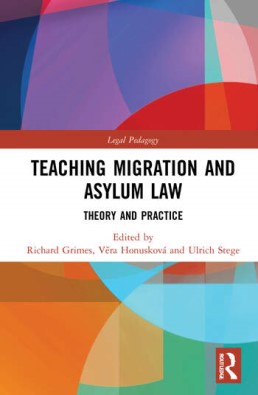
This highly topical book demonstrates the theoretical and practical importance of the study of migration law. It outlines approaches that may be taken in the design, delivery and evaluation of this study in law schools and universities to ensure an optimum level of learning.
Drawing on examples of best practice from around the world, this book uses a theoretical framework and examples from real clients and simulations to help promote the learning and teaching of the law affecting migrants. It showcases contributions from over 20 academics and practitioners experienced in asylum and immigration law and helps to unpick how to teach the complex international laws and procedures relating to migration between different countries and regions. The different sections of the book explore educational best practice, what content can be covered, different models for teaching and learning, and strategies to deal with challenges.
The book will appeal to scholars, researchers and practitioners of migration and asylum law, those teaching migration law electives and involved in curriculum design, as well as students of international, common and civil law.